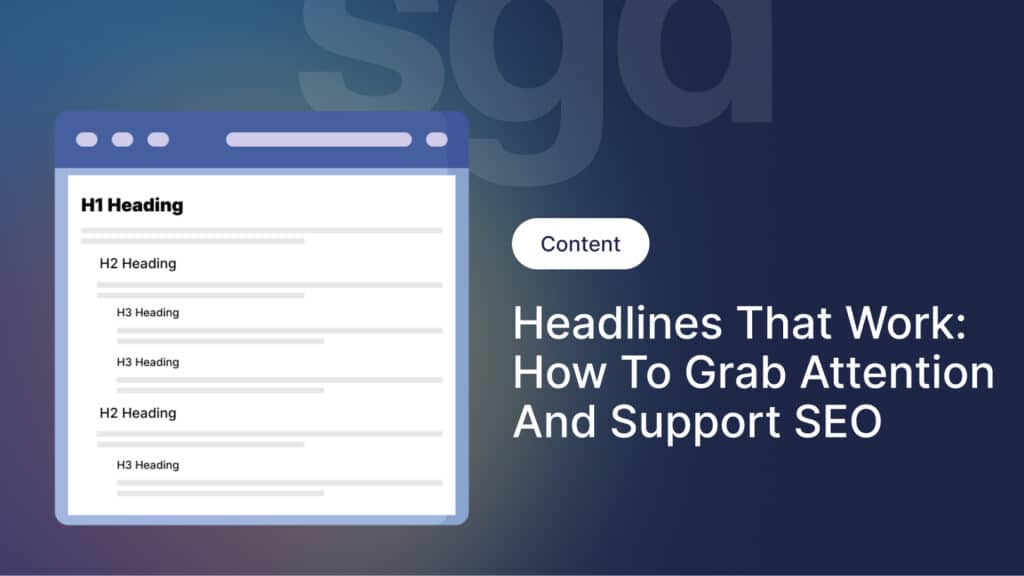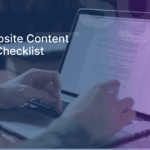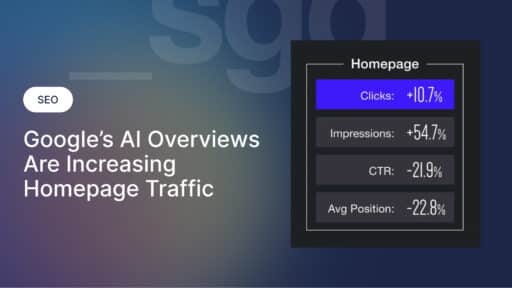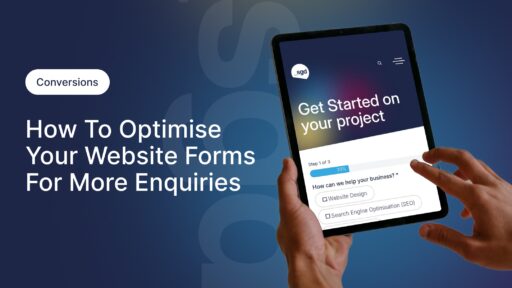Headline Writing Tips: How to Grab Attention and Support SEO
June 2, 2025 — Simon Kelly

A well-crafted headline creates curiosity, conveys value, and sets the tone for everything that follows.
You have just seconds to capture a website visitor’s interest before they move on.
Headlines are your best opportunity to make that connection instantly, whether it’s through search results, social shares, or your own website pages.
That makes headlines more than just words on a page, they’re powerful tools for influence.
In this guide, we’ll walk you through headline writing tips so you can create headlines that get attention, improve your search visibility, and help to turn browsers into buyers.
Headlines Can Make or Break Engagement
Whether it’s a website page, a blog post, or even your homepage hero text, your headline is doing some serious heavy lifting.
In just a few words, it has the power to make or break the visitor’s next move.
A great headline doesn’t just label the content, it works hard to:
- Instantly communicate what the page is about
- Spark curiosity or answer a pressing question
- Encourage people to keep reading
- Signal relevance and keywords to search engines
Think of your headline as a handshake. It’s the first interaction, setting expectations, creating a sense of connection, and inviting visitors to take the next step.
When done right, it’s not just polite, it’s persuasive.
Balancing SEO and Human Appeal
The best headlines do two jobs at once, and they do them seamlessly.
First, they speak directly to your audience’s needs, desires, and motivations. Second, they include the right keywords to help search engines understand (and rank) your content. Balancing both is where the magic happens.
So, how do you hit that sweet spot and craft headlines that work for both humans and Google?
- Start with the user in mind: What would make them stop scrolling and click? Think about their goals, problems, and what they’re really looking for.
- Include important keywords naturally: Use phrases your audience is actually searching for, but weave them in smoothly. Avoid keyword stuffing or clunky phrasing, it hurts both readability and SEO.
- Add power words: Words like essential, proven, or simple grab attention and make headlines feel more valuable and urgent.
- Keep it clear: Clever wordplay is tempting, but clarity always wins. If your headline confuses, you’ll lose the reader before they even start.
The strongest headlines aren’t just catchy, they’re clear, relevant, and built to connect instantly.
Optimising Headlines for SEO
SEO (Search Engine Optimisation) is the process of making your content easier to find through search engines like Google. When your pages are optimised well, they have a better chance of appearing higher in search results, which means more people will see (and click) them.
Your headlines play a key role in this. They should grab attention and spark curiosity, while also helping search engines understand what your page is about.
Here’s how to make sure your headlines are search-friendly without sounding robotic:
- Place your main keyword near the start: Search engines (and readers) focus on the first few words. Starting with your primary keyword increases relevance and visibility.
- Use heading tags properly (H1, H2, etc.): Heading tags help Google understand your page’s structure. Using them correctly makes your content easier to crawl and index.
- Avoid duplicate headlines across pages: Unique headlines prevent confusion and avoid competing with your own content in search results.
- Write for humans first, SEO second: Your headline should connect with real people. Balance keyword placement with natural, engaging language for the best results.
SEO-friendly headlines don’t need to be dull; when done right, they work for both search engines and your readers.
5 Headline Writing Tips for Better Results
Want your headlines to really pull their weight? Stick to these tried-and-true best practices to make every word count:
1. Be specific
Generic headlines are easy to overlook.
The best headlines promise something concrete and valuable, giving readers a clear reason to click.
The more specific you are, the more compelling your headline becomes.
Example: “How to Increase Website Leads Without Spending More on Ads”
2. Use numbers where appropriate
Numbers work like magnets.
They attract attention and instantly make your content feel organised and easy to digest.
Example: “5 Landing Page Tweaks That Increase Conversions”
3. Address pain points or questions
Headlines that solve a problem or answer a burning question instantly connect.
They show your audience that you understand their challenges and have a solution.
Example: “Why Isn’t My Website Ranking? Here’s What to Check”
4. Keep it short and punchy
Brevity is your friend.
Aim for 6-12 words to ensure your headline is easy to read, especially on mobile.
A snappy headline is far more likely to grab attention in fast-scrolling environments.
Example: “Fast Website Fixes for Slow Load Times”
5. Test variations
What sounds good to you might not land with your audience.
When possible, A/B test headline variations to see which grabs more clicks and engagement, data will show you what resonates best.
Strong headlines aren’t about being clever, they’re about being clear, useful, and impossible to ignore.
Example A/B: “10 Email Marketing Tips” vs “10 Easy Wins for Better Email Results”
Take the Guesswork Out of Headlines with SGD
Your headline isn’t just the start, it’s a powerful tool for success.
By combining creativity with SEO strategy, your headlines can do far more than introduce your content. They capture attention, build trust, and drive visibility, all while leading readers deeper into your site.
The key is to always put your audience first, use keywords naturally and with purpose, and keep your headlines clear, specific, and enticing. When you get this balance right, headlines can help turn casual visitors into loyal customers.
If you’re ready to take yours to the next level, we’re here to help. At SGD, we craft websites, and headlines, designed to connect, convert, and grow your business.
Author

Simon Kelly
Simon Kelly is the CEO and Head of Growth at SGD. Simon started his first web agency in 2009 which he merged with the SGD team in 2023. With a strong background in digital strategy and a history of working with fast-growing Australian companies, including CyberCX, Envato and Agency Mavericks, he's passionate about using ethical digital marketing that delivers business value. Simon's experience includes coaching digital agencies, running digital marketing workshops, driving growth and excellence within the SGD team.
Unlock Weekly Insights To Improve Your Website
Want to improve your website and digital marketing? Sign up to Marketing Monday for practical, up-to-date strategies on SEO, Google Ads, and website performance—delivered weekly.
No fluff, just results-driven advice. Unsubscribe anytime.
Next Article
SGD Website Content Writing Checklist
June 2, 2025Start a Project








